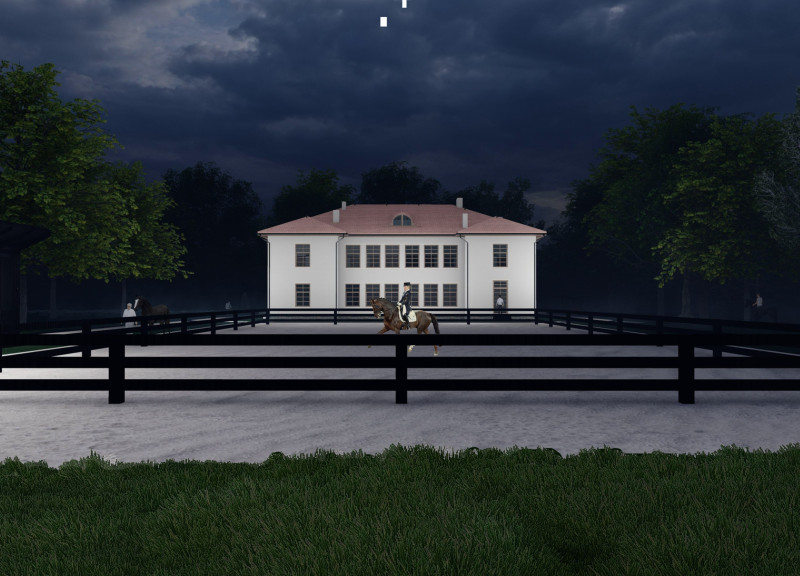5 key facts about this project
The design near Lake Burtnieks in Latvia is focused on a multi-functional facility that emphasizes the importance of equestrian life. Set against a natural backdrop, the project features the Multi Alive Museum of the Latvian Horse, which acts as both an educational center and a community hub. The aim is to highlight the historical significance of the Latvian horse, showcasing its roles in travel, work, and sport while fostering a greater appreciation for equestrian traditions among locals and visitors.
Integration of Facilities
The structure consists of two primary levels. The ground floor is designed for accessibility and comfort, housing essential amenities such as bathrooms, a kitchen and dining area, a foyer, studios, and a living space. This arrangement ensures a functional environment for both guests and staff, encouraging relaxation and engagement with the building's offerings.
The first floor is dedicated to accommodation, featuring several rooms that allow for overnight stays. Kitchenettes are included to support self-sufficiency among visitors. Additional facilities such as changing rooms, a sauna, and a wet room enhance the recreational aspects of the building, aligning with its equestrian focus.
Amenities and Recreational Elements
A variety of amenities enhance the visitor experience throughout the facility. Key features include a gardening area, paddock, bus station, and a training and vaulting arena. The design also incorporates bike parking, hammock areas, and spaces for aromatic and tea plants, integrating the facility with the surrounding landscape. These elements promote outdoor activities and offer relaxation spaces for anyone visiting.
Sustainable Design Principles
Sustainability is an essential consideration in the design's conception. The approach encourages cultural activities and is mindful of environmental impacts, achieved through the careful use of local materials. By supporting local craftsmanship, the design contributes to cultural preservation while also prioritizing ecological responsibility.
Workshops in traditional saddlery and farriery are also part of the educational offerings. These spaces allow visitors to engage directly with equestrian practices and gain practical insights into horse care. The design encourages a deeper understanding of these traditions, connecting historical practices with modern applications.
The layout provides a mix of indoor and outdoor experiences. Pathways and open areas invite exploration, fostering an immersive connection with both the equestrian world and the natural environment. Visitors can stroll, learn, and appreciate the landscape as they interact with the various functions of the facility.






















































